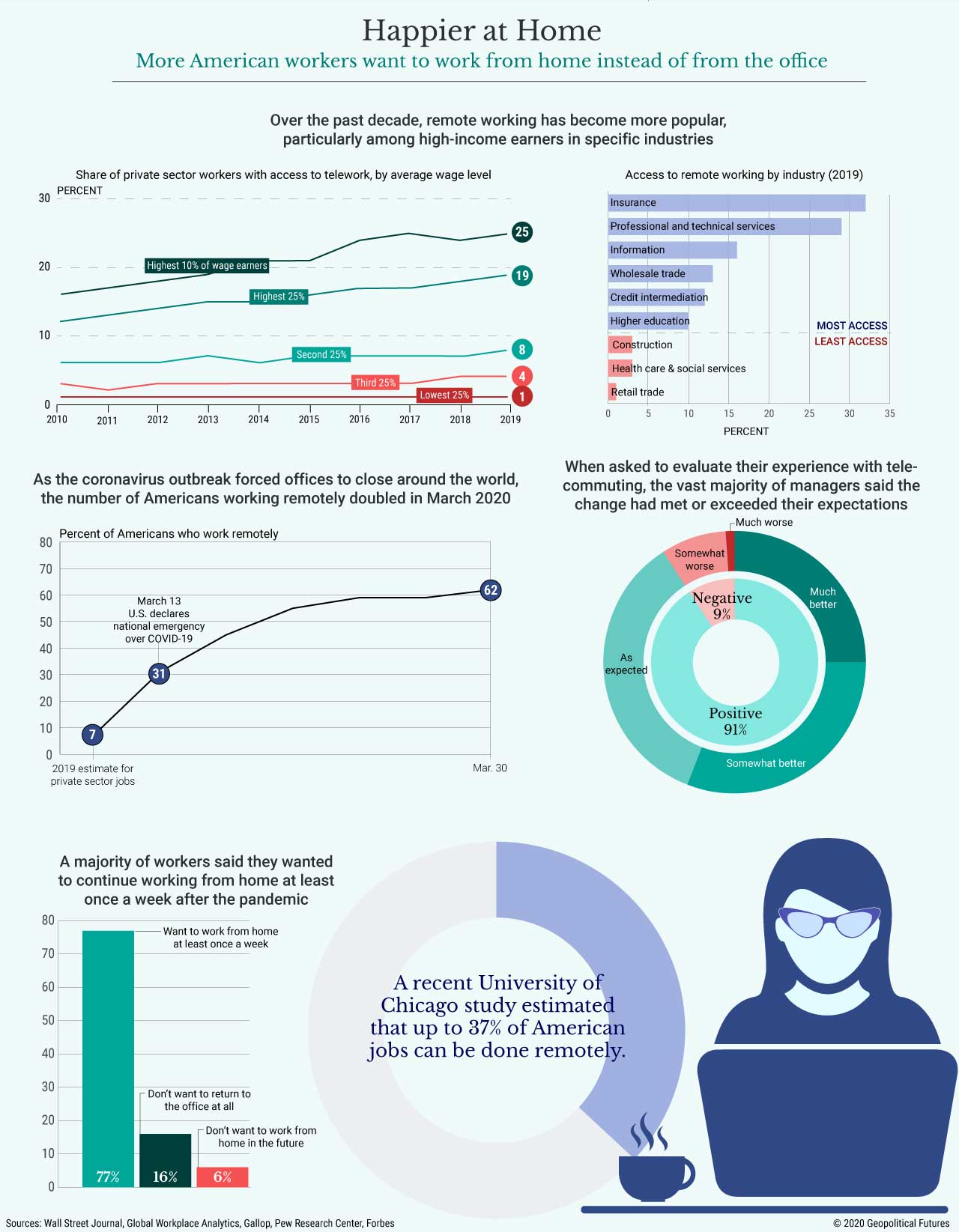Since the outbreak of the coronavirus pandemic, and the subsequent imposition of lockdown and social distancing measures, employee behavior in the United States has changed dramatically. Much attention has been paid to the rise in telecommuting, and indeed, working from home was becoming increasingly popular even before the pandemic. But this applies only to a select group of workers who represent a minority of the U.S. workforce.
Employees who are able to work from home tend to be high-income earners in industries often described as “white collar.” But for those employed in industries that require workers to be physically present, many of whom are considered essential workers, telecommuting is not an option. This category includes first responders, power plant operators, food industry workers and those employed in logistics.
There’s a third group of workers who have been affected by the pandemic: namely, those who have lost their jobs. In the past 14 weeks, some 47 million Americans filed for unemployment. While some have managed to find other jobs as economies have slowly started to open up, many remain out of work. The differences in the socio-economic status of those who can work from home and those who either can’t or have lost their jobs help to explain in part the competing views on how the country should pursue economic recovery.







